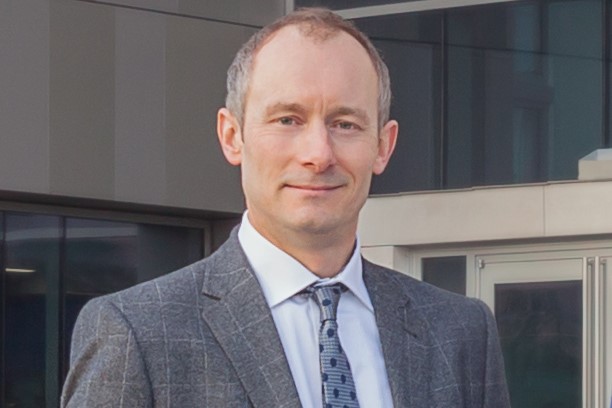
A recent report by Teach First highlighted that not a single woman's name appears in the national curriculum for GCSE science. This lack of representation, the charity says, is a big factor in why so few girls studying STEM subjects beyond GCSEs, robbing us of potential talent at a time when shortages in STEM skills cost businesses £1.5 billion a year.
In the engineering sector we have a huge challenge on our hands in this regard. Just 12% of all engineers in this country are women. There are, in turn, 165,000 engineering students in the UK, but only 26,000 (16%) of them are female. What’s more, whilst black, Asian and minority ethnic individuals make up 12% of the UK workforce, they constitute only 8% of engineers and technicians.
This is a problem not only because it is unfair, but because, with a retiring workforce and technology creating new opportunities, engineering is suffering from severe skills shortages, and new talent is needed urgently. According to Engineering UK, the sector has an annual demand for 124,000 engineers and technicians with core engineering skills, but faces a shortfall of up to 59,000 a year.
 The lack of diversity in UK engineering is therefore a major concern for our sector. Diversity – in all its forms – is needed in order to boost creativity and innovation, as well as to fill the skills gap and boost overall productivity.
The lack of diversity in UK engineering is therefore a major concern for our sector. Diversity – in all its forms – is needed in order to boost creativity and innovation, as well as to fill the skills gap and boost overall productivity.
In addition to issues relating to history and the culture of the profession, Hilary Leevers, the chief executive of Engineering UK, thinks female underrepresentation in engineering is largely due to girls dropping out of educational pathways at every decision point, despite performing as well as boys in STEM subjects.
It therefore strikes us that we have a dual challenge to meet: first, we must create more inclusive and progressive workplace cultures that enable people from all backgrounds to reach the top of the engineering profession; and second, we need to build diverse talent pipelines right the way from primary school level that ensure people from all walks of life are able to enter the profession in the first place.
Improving workplace cultures is not easy. Sometimes policies are implemented with the best intentions, but they don’t yield results because the culture of a company as a whole doesn’t change. Change, therefore, requires a holistic approach that starts with clear and supportive leadership, not just the ticking of a particular policy box.
Companies should avoid becoming hung up on precise and correct language but should focus on education, continuous consultation with staff and ensuring new ways of working become the norm. This includes staff training to improve the atmosphere and environment for women and ethnic minority workers, exposure to different cultures and backgrounds, and learning from peers and partners rather than working in isolation. It also means leaders setting clear values, and signposting these consistently.
We should be continually re-evaluating our policies and practices in line with the feedback our employees give us. At Burns & McDonnell, we get that feedback by speaking to our employees directly, but also by having a broader conversation with the wider industry – through conferences and other industry events, articles, and social media. We know, for example, that flexible working hours is one of the most common solutions for millennial workers, who value a strong work-life balance, and so are addressing this. It’s important that we stay in touch and keep up-to-date with what our employees expect.
Looking at the second challenge, the whole of the sector, along with the education system, needs to improve how it engages young people in STEM subjects from primary school onwards. Often, biases in teaching and how students perceive each other manifest early, meaning female students head down a divergent path to that of their male peers, even as children.
To help counteract this, schools certainly need to review how they approach the problem. But engineering firms can play their part too, by, for example, engaging actively with schools and universities to teach students about their work. At Burns & McDonnell, we are proactively engaging with students at a young age and recruiting others to join the STEM profession, because we know the strength of tomorrow’s STEM leaders depends on their diverse and collective vision. Often, simply showing students the possibilities of an engineering career, of which they may previously have been unaware, can make the difference.
We need, in addition, to make a commitment to change recruiting practices so that they take more account of the need for diversity. When we’re growing our teams within our own company, we look for a range of people who can connect with a variety of clients and apply diverse thinking to complex problems. We recruit from across the UK, and our employees come from a range of different universities, educational backgrounds, and industry organisations.
New and prospective entrants into the engineering profession also need role models to inspire them to work in the sector. When our industry looks more like society as a whole, these role models will become more representative, thus helping generate a sustainable pipeline of skilled and talented young people.
Supercharging STEM with science capital
Engineer salary survey highlights widening gender pay gap
In our UK home in Birmingham, we’ve aimed to meet the dual challenge by signing the West Midlands Combined Authority’s Inclusive Leadership Pledge, committing to provide a pipeline for producing diverse talent, whilst also ensuring that women make up one third of our senior management team by 2023.
To help ensure female engineers thrive throughout their careers, we also partner with the Women’s Engineering Society, which provides networking opportunities and important guidance on promoting workplace diversity, as well as celebrating talented engineers with awards and the annual International Women in Engineering Day.
We all look at things differently. It therefore follows that diversity steers engineering firms and their clients towards success and helps uncover unique solutions for challenges. Indeed, a recent study of 600 firms showed that inclusive teams make decisions twice as fast and require half the number of meetings, and diverse team decisions deliver 60% better results. The fact that we need more diversity in our sector is, therefore, undeniable. Whether we get there depends on a concerted effort by all players, from all sides, to address both the supply of talented individuals and how we treat them when they reach us.
Jonathan Chapman, CEng, MICE, MIET, is the managing director for Burns & McDonnell in the UK. He has more than 25 years’ experience delivering projects in the power, water, telecom and gas sectors. Polly Osborne is an Electrical Power Engineer at Burns & McDonnell UK. She is the company’s STEM Ambassador in the UK.










Water Sector Talent Exodus Could Cripple The Sector
Maybe if things are essential for the running of a country and we want to pay a fair price we should be running these utilities on a not for profit...